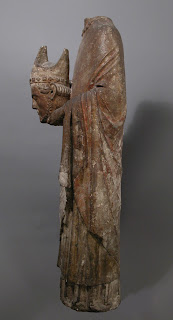When I was a child, waking up early on Saturdays meant one thing: watching Pee-Wee's Playhouse. Little did I know that my love for this whimsical character, portrayed by the legendary Paul Reubens, would become a defining aspect of my childhood and leave an everlasting mark on my life.
At first, my parents might have thought my fascination with Pee-Wee was just a typical childhood obsession with colorful and silly television shows. After all, Pee-Wee's Playhouse was a delightful series featuring anthropomorphic household items like talking sofas and a witty globe. What could be more harmless?
However, my family's concerns started when I began to imitate Pee-Wee incessantly. I talked like him, walked like him, and found myself endlessly inspired by his exuberant personality: "La-la-la-la-la." At times, I even found myself quoting his iconic lines, such as the famous exclamation about not messing with someone's dots. And I would say stuff like, "Knock! Knock! Who's there?" and "I know you are, but what am I?" I had fully embraced Pee-Wee's persona and couldn't help but express it, even in public places like the Piggly-Wiggly during grocery shopping trips.
While my mother, father, and older brother were not entirely pleased (and my younger brother just shrugged his shoulders) with my Pee-Wee imitations outside the comfort of our home, I felt a connection with the character that went beyond surface-level entertainment. Pee-Wee represented something deeper to me - a sense of jouissance, wild abandon, and the desire to be extraordinary and unapologetically unique.
When Pee-Wee's Big Adventure hit the big screens, I was six years old and already in my element, loving to show off and talk endlessly about my favorite things. Interestingly, my other passion at the time was listening to Christian singer Sandy Patti, which might have seemed like an odd combination for a young child. Nevertheless, my love for Pee-Wee and Sandy Patti knew no bounds.
The movie itself was a dream come true. I adored the Rube Goldberg contraption that prepared a simple bowl of cereal and fed the dog in the opening scene. And of course, who could forget Pee-Wee's beloved bike? I yearned for a life like his, filled with color, joy, and a happy home.
Looking back on those memories now, I realize that Pee-Wee was more than just a character to me. He represented a fantasy, a glimpse into an intriguing and liberating life. In my young mind, Pee-Wee embodied the essence of what I thought a happy and carefree life might look like - a single man, riding his bike, surrounded by a vibrant and accepting community. But most importantly, he cherished what mattered most to him - his beloved bike.
As the news of Paul Reubens' passing on July 30th, 2023, reached the world, I couldn't help but feel a profound sense of gratitude for the joy he brought to countless lives, including mine. The iconic laugh that resonated with so many of us will forever remain etched in our hearts.
Pee-Wee's Laugh: Which I Imitated Incessantly Until My Parents Forbade Me to Laugh Like Him.
So here's to you, Mr. Reubens. Thank you for sharing the gift of Pee-Wee Herman with the world. Your unapologetic embrace of joy and playfulness touched the lives of many, including a little boy who found solace and happiness in your exuberant character. Heh heh heh!






.png)


